TCL 6-Series vs LG QNED99: Which 8K TV should you buy?
Both TVs have huge resolution, but which is best for you?
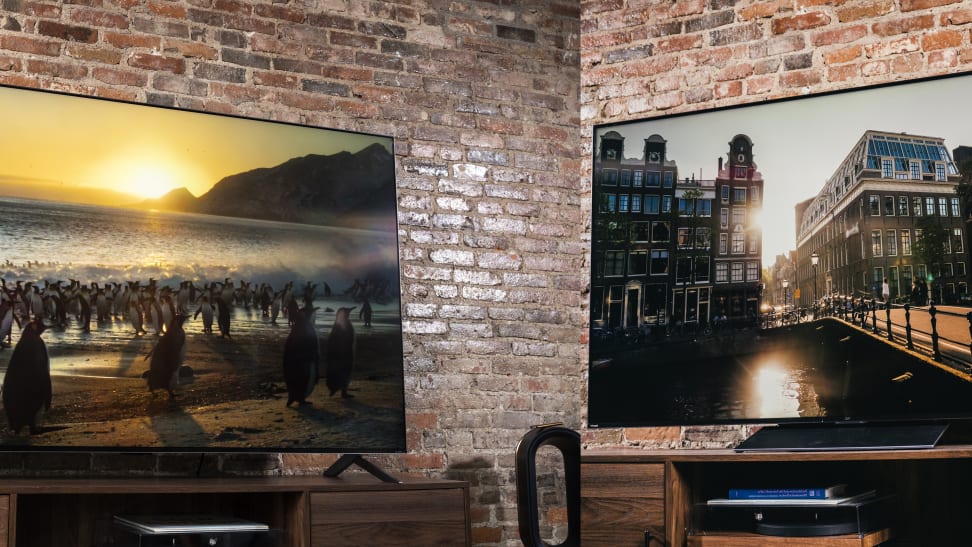 Credit:
Reviewed / Jackson Ruckar
Credit:
Reviewed / Jackson Ruckar
Products are chosen independently by our editors. Purchases made through our links may earn us a commission.
8K TVs have arrived, and although 8K content is still basically non-existent, the prospect of upgrading to a futuristic, super-high-resolution TV (with four times the pixels of a 4K TV) is too good for some folks to pass up. Several major TV brands now offer 8K TVs, but two models in particular made waves this year: the TCL 6-Series 8K and the LG QNED99.
Both offer stunning picture quality, a built-in smart platform, and an impressive array of features, but there are some critical differences you ought to consider before catapulting yourself into the future of television.
Buy the TCL 6-Series 8K at Amazon
Price
Being high-end, bleeding-edge 8K TVs, both the 6-Series and the QNED99 are priced at a premium. If you want to show off an 8K TV to your friends and family, you can expect to plunk down a pretty penny for the privilege.
Before we get into features and performance, let’s see how each series shakes out in terms of pricing.
TCL 6-Series 8K:
- 65-inch (TCL 65R648), MSRP $2,199
- 75-inch (TCL 75R648), MSRP $2,999
There’s not a great deal of flexibility here. If you’re in the market for a small- or medium-sized TV, the 8K 6-Series won’t get you there. But the benefits of 8K resolution also drop off after a certain class size; given the pixel density, your eyes likely won’t notice a difference between a 50-inch 4K TV and a 50-inch 8K TV. In other words, you shouldn’t expect to see 8K TVs below 65 inches until 8K becomes the industry standard.
Here's a look at the QNED99 series lineup.
LG QNED99:
- 65-inch (LG 65QNED99UPA), MSRP $2,499.99
- 75-inch (LG 75QNED99UPA), MSRP $3,499.99
- 86-inch (LG 86QNED99UPA), MSRP $5,299.99
Like the 6-Series, 65 inches is the smallest you can go with the QNED99, but there is a jumbo-sized 86-inch version for folks who want to go above 75 inches.
Despite the QNED99’s extra size option, the TCL 6-Series is significantly more affordable. This one goes to TCL.
Our pick: TCL 6-Series 8K
Design
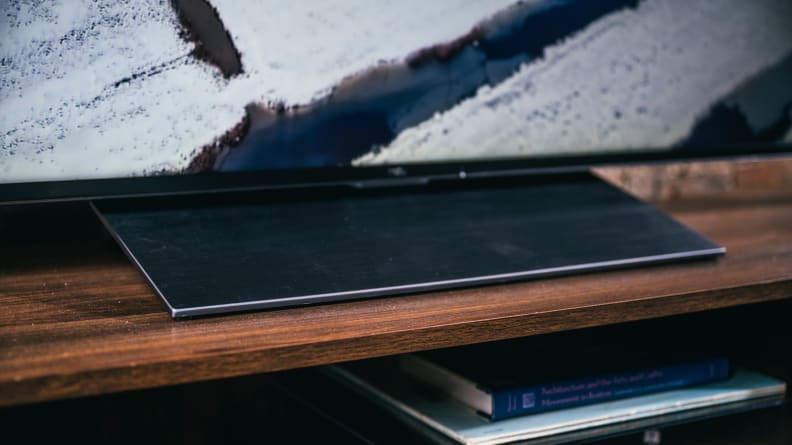
The TV's stand—a slender, slightly bent slab of metal—is unique and visually appealing.
There are several aspects of the 6-Series’ design that I quite appreciate. For one thing, its stand—a slender, slightly bent slab of metal that rests beneath the center of the panel—is a visual breath of fresh air. There’s even a convenient cable management system built-in, which is good news if you’re keeping the 6-Series on a table and intend to keep things tidy.
That said, this is a chunky TV that looks as heavy as it is (70 pounds for the 65-inch model). Some of the 6-Series’ design flourishes also feel like separate elements pasted together. The borders of the panel, for instance, resemble welded-together strips of metal rather than single, unified pieces. The lack of finesse might irk those with a keen eye for design.
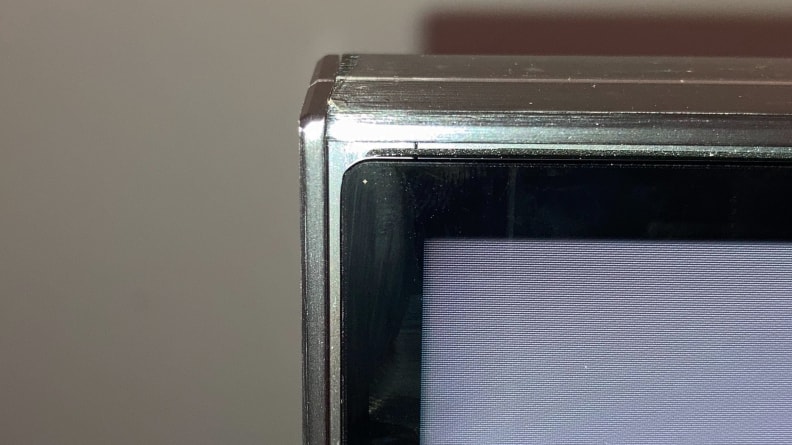
The metallic borders that wrap around the 6-Series' panel—seen here—give the TV an unfortunate, slapped-together feel.
Another thing that caught my eye was the area of the panel where the picture meets the bezel. If you look at the edges of the picture from an off-angle perspective, the display itself appears to be recessed by about a quarter of an inch. The edges of this recessed portion cast a shadow along the edges of the panel and sometimes even reflect what's playing, giving the picture a ghost-like border that distracts the eye.

The QNED99's panel is impressively thin given the complexities of the display technology held within.
The design of the QNED99, on the other hand, is quite fetching—especially if you appreciate a simple approach. Its ultra-narrow bezels put the picture front and center, and the TV’s metallic frame gives an air of minimalist sophistication.
Given the complexities of its internal hardware, the QNED99’s panel is surprisingly thin. Its sleek profile makes it a great candidate for wall-mounting, but should you opt for a table or TV stand, its slender build is still easy to appreciate. The QNED99’s thin, angular feet almost disappear in dark environments, though you'll need to be careful as you move the set as they're liable to scratch softer surfaces.
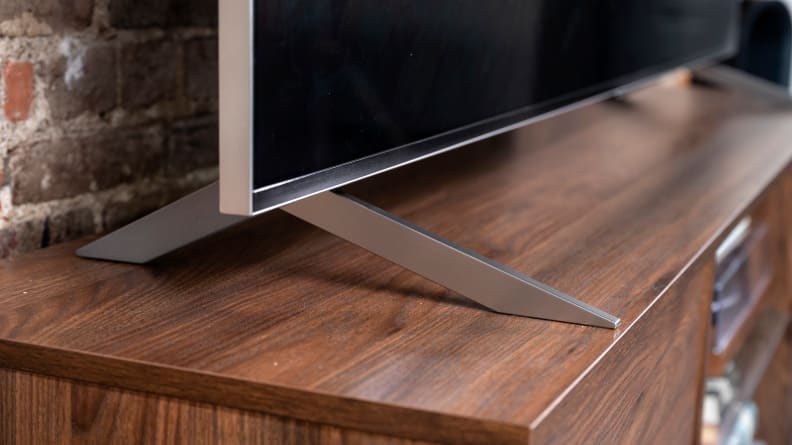
The TV's razor-thin feet do not draw attention to themselves—and that's a good thing.
There’s nothing truly wrong with the TCL 6-series' look and feel, but when it comes to both form and function, the QNED99 has a leg up on it.
Our pick: LG QNED99
Features and smart platform
Cutting-edge TVs should come with an appropriate amount of features. Fortunately, such is the case for the 6-Series and QNED99, both of which are kitted out for the future.
Before we dive into the differences, let’s take a look at the performance specs and features shared by both models:
- Resolution: 8K (7,680 x 4,320)
- Display type: Mini-LED with quantum dots
- Dimming technology: Full-array with local dimming
- HDR support: Dolby Vision, HDR10, HLG
- Dolby Atmos: Yes (native decoding)
- eARC support: Yes
- Native refresh rate: 120Hz
- Auto Low Latency Mode (ALLM}: Yes
Both TVs offer up strong HDR support, including Dolby Vision (a proprietary, dynamic version of HDR considered to be the gold standard by many). In addition, both models support Dolby Atmos by way of HDMI ARC/eARC passthrough, and both TVs can decode Dolby Atmos natively for versatility with a variety of sound setups.
When it comes to gaming, the two TVs begin to diverge. Both feature a 120Hz refresh rate, Auto Low Latency Mode, and HDMI 2.1, all of which are difference-makers when it comes to next-generation gaming. That said, only two of the 6-Series’ four HDMI inputs support 4K gaming at 120fps or 8K gaming at 60fps, while all four of the QNED99’s HDMI inputs offer these features. It’s true that 8K gaming is still a ways away, but the QNED99 is better equipped for that particular outcome.
On the other hand, the 6-Series supports Variable Refresh Rate (VRR)—a technology that prevents visual artifacts during gameplay—while this feature is curiously absent from the QNED99. Both TVs are great gaming options, but both have their drawbacks there.
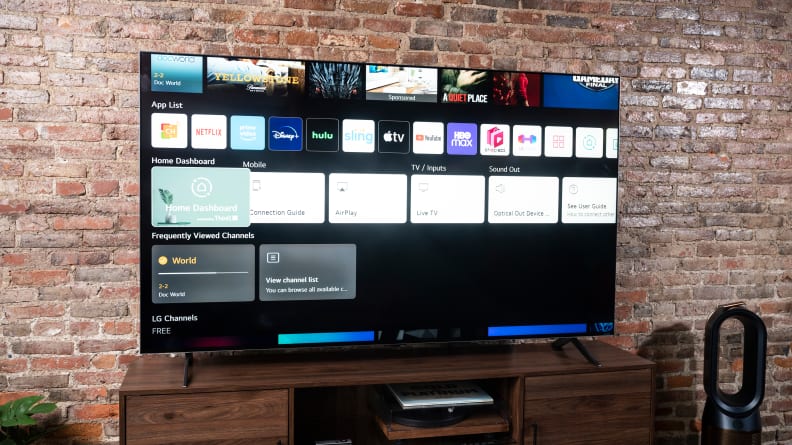
LG's webOS smart platform is customizable with its own app store, but its implementation on the QNED99 is quite sluggish.
It’s worth looking at their respective smart platforms, too. The 6-Series is a Roku TV, which means our favorite smart platform is ready to use right out of the box. If you’re hoping that your next TV offers flexible, easy-to-use smart features, this set won’t let you down. It’s intuitive enough for newcomers while still being fast and robust enough for experienced streamers who expect a wide selection of apps.
The QNED99 experience centers around the newest iteration of LG’s webOS smart platform, which has seen some changes in recent years. Its home screen is where you’ll spend most of your time, and while there are plenty of apps and a slew of sponsored content to choose from, I found the response time of the software to be relatively slow, which is kind of a drag for a top-shelf TV like this.
There’s no denying that, while both are powerful TVs with a ton of features, the 6-Series and QNED99 each have their shortcomings. Still, despite the 6-Series’ lack of universal HDMI 2.1 support, it makes up for it with VRR support and an all-around superior smart platform.
Our pick: TCL 6-Series 8K
Performance
Currently, there’s no such thing as an entry-level or a mid-range 8K TV. This might be bad news for your wallet, but consider it good news for your eyeballs. Thanks to their 8K pedigree, both the 6-Series and the QNED99 are high-performance TVs in addition to being high-resolution.
The 6-Series uses a VA-style panel, which allows it to get much darker. The added depth reveals excellent shadow detail in darker scenes. Unfortunately, there’s a tradeoff, as VA panels struggle to maintain picture integrity during off-angle viewing. The QNED99 is equipped with an IPS-style panel, which can’t get quite as dark as a VA-paneled TV, but holds up better during off-angle viewing.
But black levels and shadow detail aren’t the whole story. The QNED99’s powerful backlighting system is capable of well over 1,000 nits of brightness during HDR—even higher if you count specular highlights like reflective lighting. The 6-Series, on the other hand, tops out at around 700 nits during HDR content. The difference isn’t severe, but the QNED99’s added brightness goes a long way toward offsetting its relatively shallow black levels.

The QNED99’s powerful backlighting system is capable of well over 1,000 nits of brightness during HDR.
Color production is another area where the QNED99 outshines the 6-Series (though not by much). The 6-Series covers approximately 93% of the wide HDR color gamut (DCI-P3), compared to 95% for the QNED99.
Finally, we must discuss the state of 8K content. While testing these TVs, my 8K content pool was limited to wordless, travelogue-style sizzle reels of colorful locales and slow-motion footage of animals—all of which are on YouTube.
In fact, for most people, YouTube will be the only avenue for showing off their fancy new 8K TV with content that actually fits its capabilities. There just isn’t much to choose from during a moment in time where 4K content is just now reaching standardization. Given these TVs’ high-end prices, the dearth of native 8K content ought to factor into everyone’s decision about whether or not to make an investment in 8K right now.

Both the 6-Series and the QNED99 are high-performance TVs in addition to being high-resolution.
Since most of what you watch (1080p and 4K content) will be upscaled to 8K, these TVs’ upscaling abilities are also an important metric. To that end, I’ve found that the QNED99 is slightly better at upscaling older 1080p content (think standard Blu-rays and older streaming programs). While 4K content on both TVs looks just fine, 1080p video on the 6-Series often leaves behind artifacts, particularly in out-of-focus regions where there’s not a lot of visual information to work with. These artifacts take the form of fuzzy edges, dithering, and noise.
Between the added brightness, better color, and slightly superior upscaling, the LG QNED99 comes out on top.
Our pick: LG QNED99
And the winner is…
This one is too close to call, so we’re going with a draw. The 6-Series features a better smart platform and a friendlier price, while the QNED99 features a sleeker design and better performance.
If you’re a gamer, however, take a harder look at the 6-Series. It might only have two HDMI ports that make the most of its hardware, but I reckon that its VRR support is equally as important to folks who plan on gaming with an Xbox Series X or PlayStation 5 for years to come. If you come to terms with the 6-Series' quirky design and connectivity limitations, it very well might be the smarter pick for you.
8K televisions are only beginning to emerge, and because of the lack of 8K support across the industry, TVs like the 6-Series and QNED99 are still somewhat of a novelty. Still, if you’ve got your heart set on being an early adopter, both of these TVs offer plenty of upside. If you’re not a gamer and you just want the better-looking TV, go with the LG QNED99. If you are a gamer—or if you’re just seeking a better software experience—the TCL 6-Series is a better fit.

